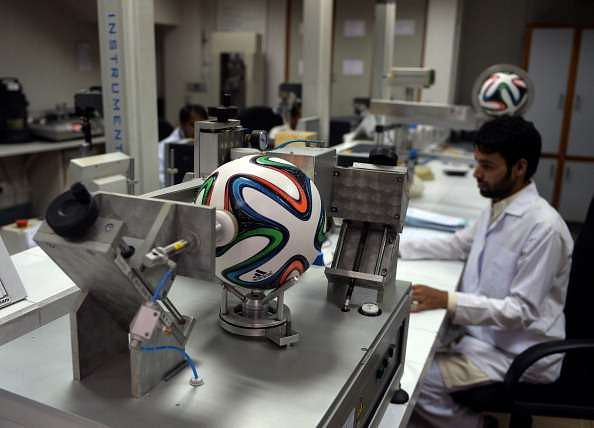
Tango, Telstar, Jabulani, Brazuca and the list goes
on. So what are these names, any random guesses? For folks like me who are
thinking these are some spicy Italian or Mexican cuisines the answer is huge “No” these names are crown of identity
for both FIFA and Addidas, one of the most successful partnerships any sports
industry could witness. And what cements them together is the “soccer ball” thus; these names are the
names of the official FIFA world cup footballs manufactured by Addidas.
Addidas has been the official football provider for
FIFA for more than ten seasons. And “ace
of craftsmanship” is their mantra for winning down the tenders of being
FIFA’s ball supplier. So, where and who does this phenomenal crafting
and how Addidas reach them, opens up today’s learning on Supply chain of footballs of FIFA.
During 2014 FIFA world cup Addidas faced a huge
demand of footballs which in turn imposed a huge demand from China who was a co-producer
for Addidas till then. China lacking the factor of responsiveness made Addidas to
turn towards Sialkot, the city of sports goods supplier. Sialkot, a small city
of Punjab province, Pakistan not only fulfilled the demand but also firmly set
its presence in the Brazil soil through “Brazuca”,
the world’s most high tech football one has ever seen
till 2014.

The productions of these grandiose balls begin through
the Addidas procurement of artificial leather from China and these artificial
leather sheets are piled together to reach different stitching units. In Sialkot
almost 80% of the balls are hand stitched by native craftsman of Pakistan. Once
the process of stitching is done it reaches the factory where the balls undergo
heating, stamping, blow drying, taping and weighing. After the production is over the balls are
pressurized through rigorous testing to ensure it can withstand the kicks of
goal keepers, defenders, mid-fielders and strikers. Finally, when once it is
ready the balls bid goodbye to Sialkot and reaches the ports of Karachi from
where they are set to be celebrated at FIFA, Olympics, European nation league
and what not.

Sialkot balances the mix of efficiency and the
responsiveness with its developing football manufacturing industries, precise
art of ball making and with the huge availability of cheaper yet best craftsmen
of the world. Followed by Brazuca Sialkot won the order from Addidas for
manufacturing the “Telstar’ 18” (FIFA 2018 football)
world’s highest technology football one has seen or heard or played with till
date. Today almost 70% (approximately
40 million footballs get’s exported annually) of world’s footballs come from
Sialkot; which says 7 out of 10 balls speak the phenomenal story of Sialkot and
its power on soccer game.
One of the major up-gradation Sialkot is undergoing
is the partial substitution the man made stitching into machine made stitching.
And this technology up-gradation empowers the industry to scale up production
rate to catch up the hiking demand of Sialkot balls. Thus, Addidas claim FIFA’s
footballs by acclaiming Sialkot, the sports hub of Pakistan. When Germany won
the title Sialkot won an astounding livelihood in same game of FIFA 2014 #Happy_




This comment has been removed by the author.
ReplyDeleteInteresting read. I recommend you to look at the making of the Brazuca ball because it is one the most complicated for a football yet very efficient to make the ball.
ReplyDeleteThe link is below!
https://youtu.be/PLlYnuFdUEk
Thank you Sheerapthi, I would definitely have a look
ReplyDelete